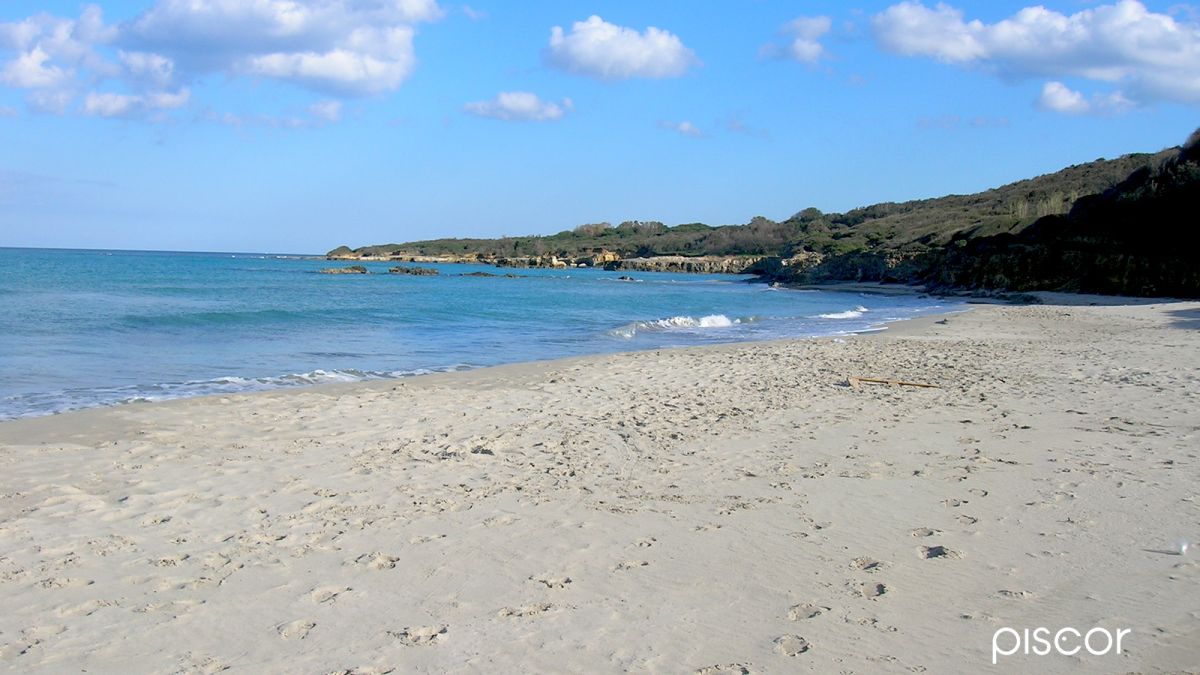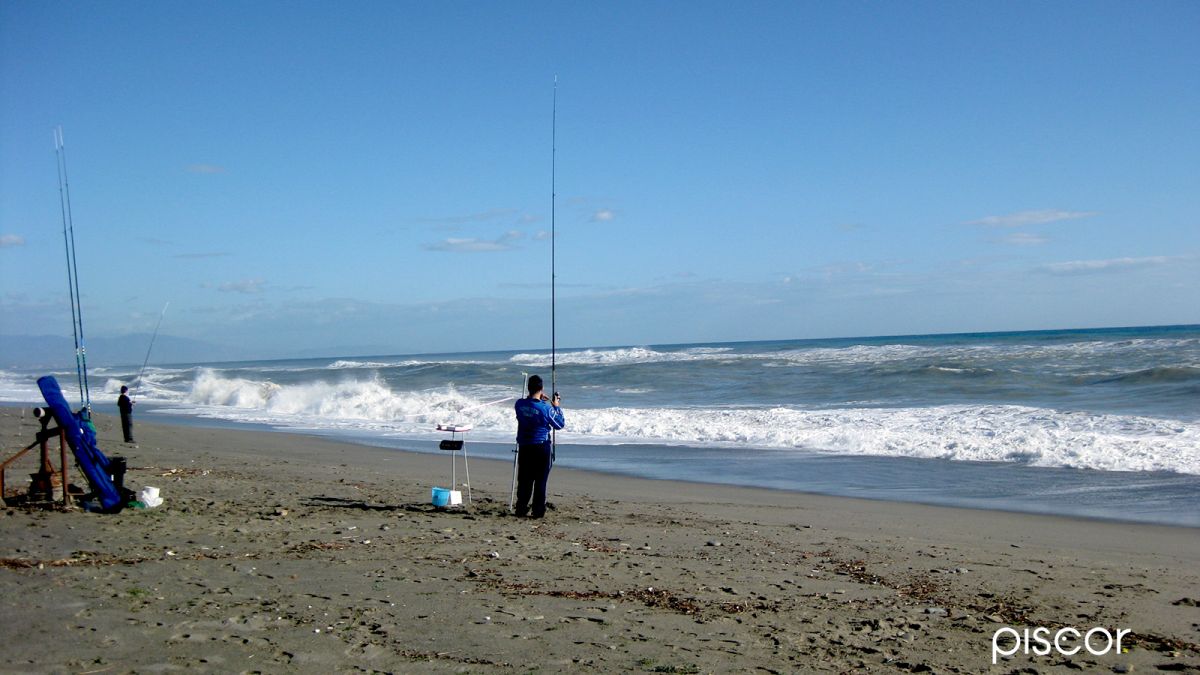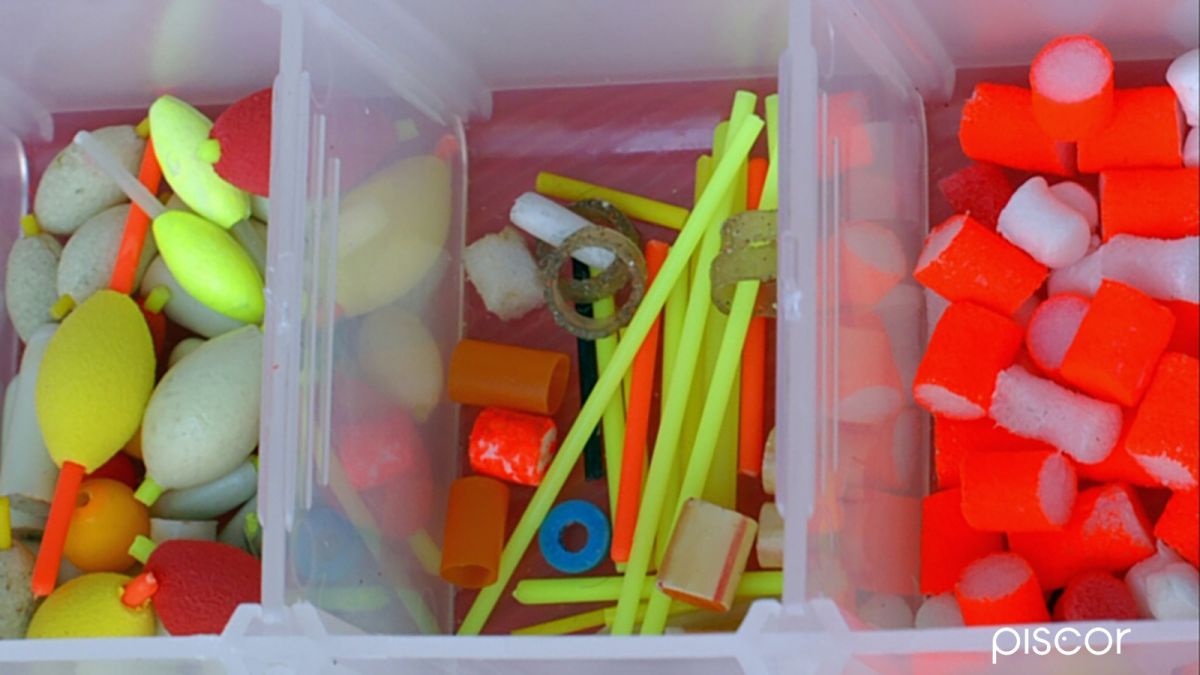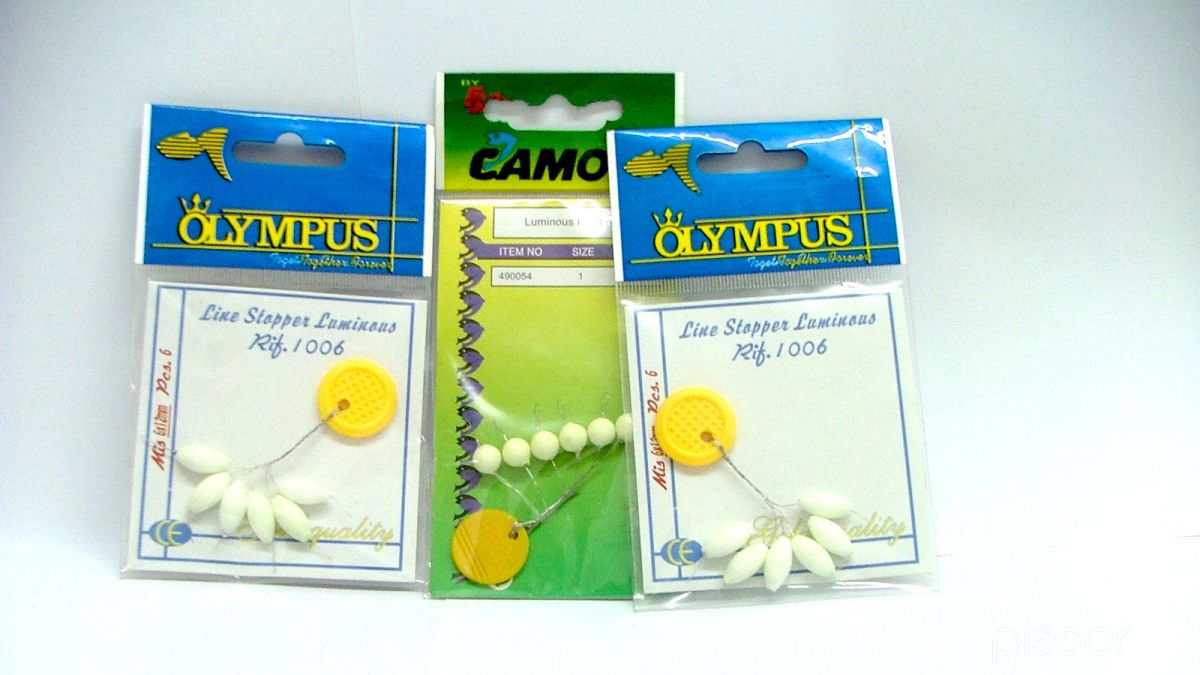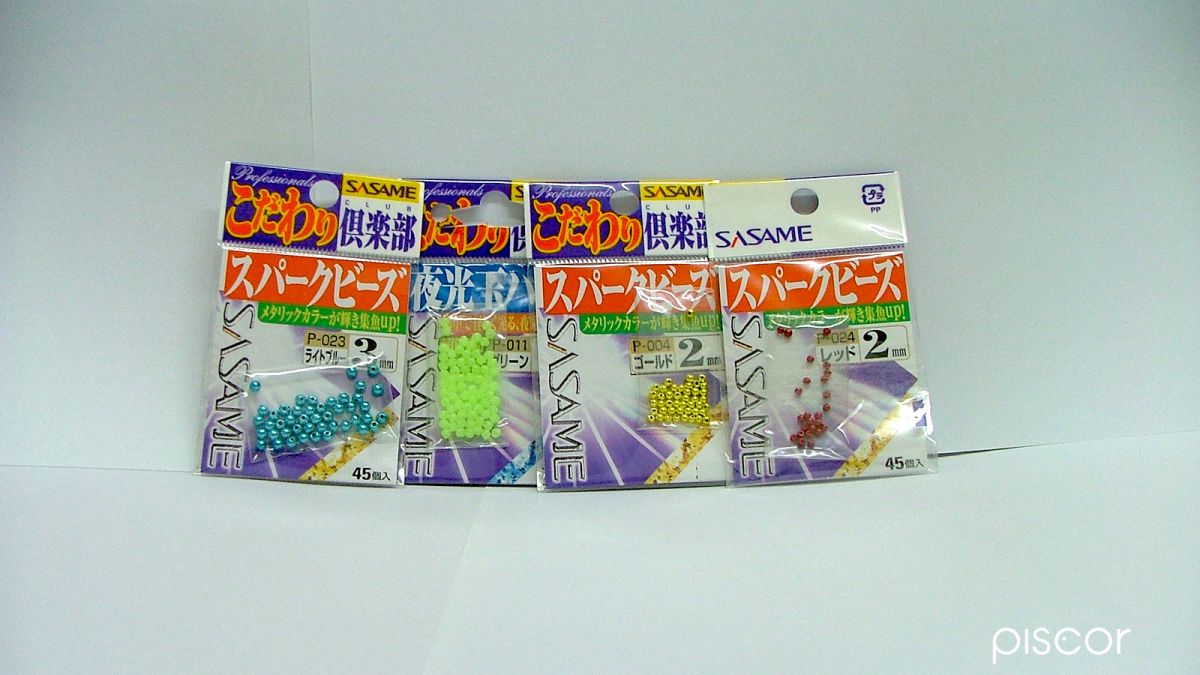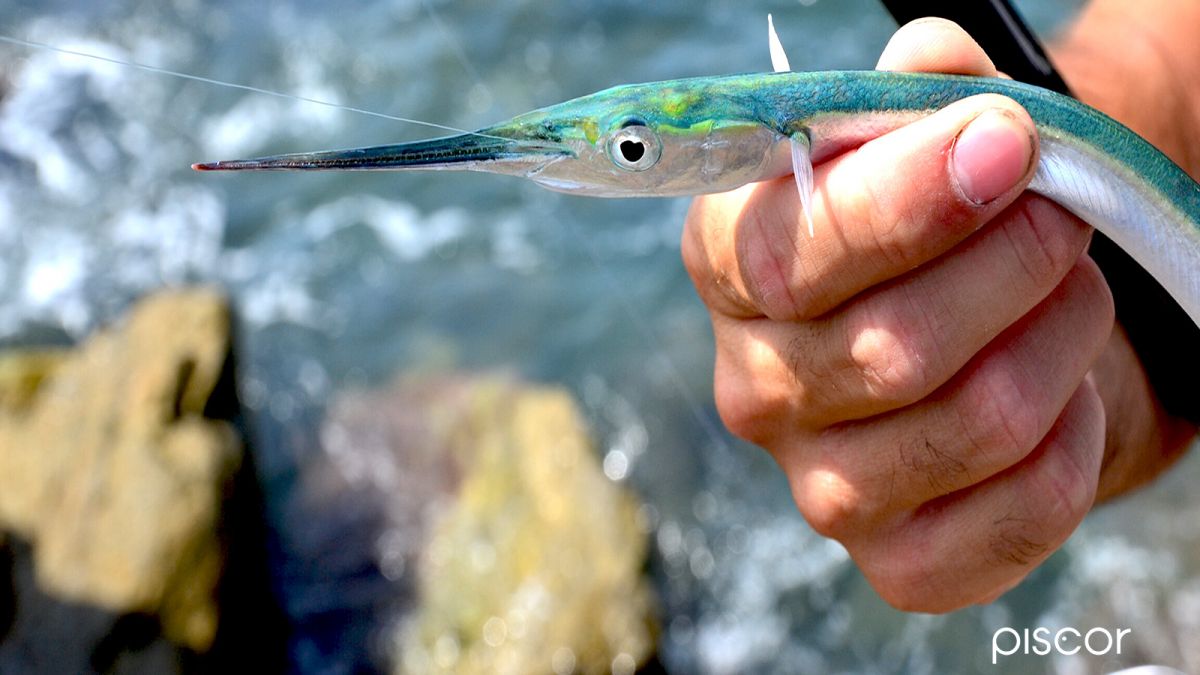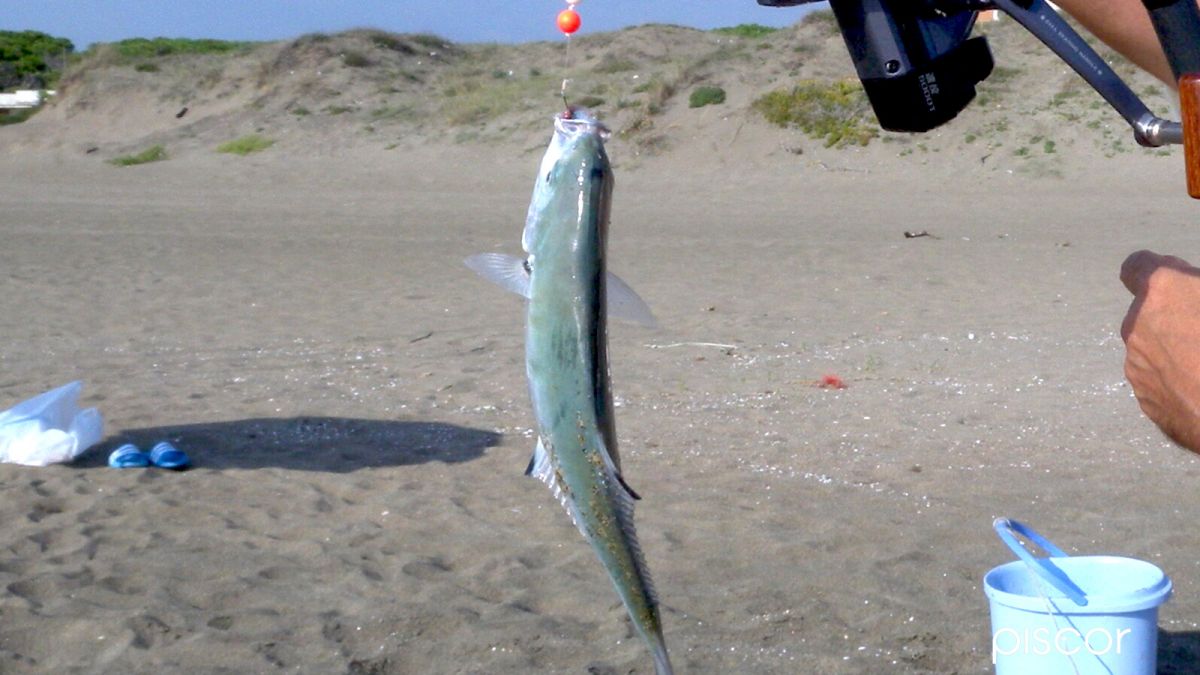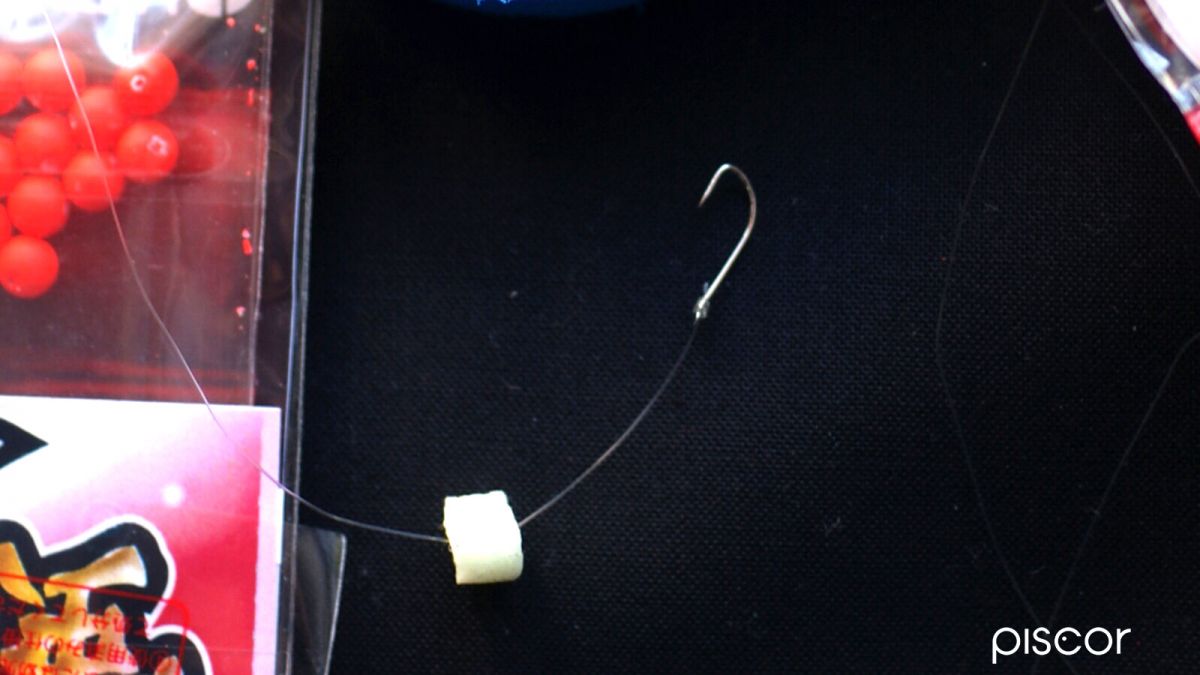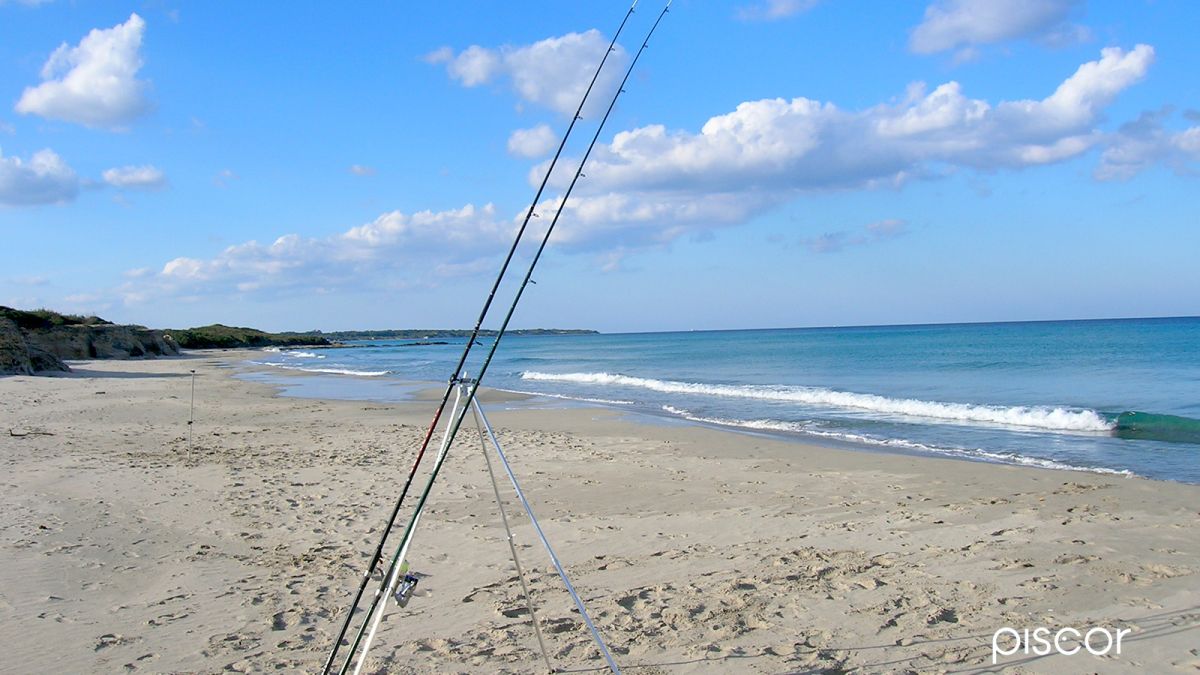It seems like yesterday when surfcasting started to take root on our beaches, where the classic technique that was carried out was that of the deep lancet, but it's been over twenty years!
It still seems today when beach ledgering has evolved to such an extent that it has become an essential and integral part of the technical baggage of all lovers of beach fishing, when at some point we began to talk about surfing on the surface.
As usual, the thrust of this new method came from competition, becoming an extreme and irreplaceable need suitable for dealing with particular situations and especially to fill the need for points, when the classic bottom fish, such as the sand steenbrass, at certain times and on certain beaches tend to languish.
Those who practice or have practiced for a long time and constantly the beaches, will have had the opportunity, even if randomly, to come across fish not "searched", caught perhaps with rigs prepared specifically for other species and certainly not to go in search of garfish, bogue, mullet orleerfish and occasionally even small amberjacks.
And it is precisely from these "accidents" that the reflection was born, in competition and then in amateur fishing, to be able to make up for the lack of sand steenbrass on certain beaches or at certain times (sand steenbrass has represented for the agonists and not, the reference fish to be sought in all ways!).
Even the development of competitions in the presence of light and not classically from sunset onwards, have brought the refinement of this technique, which is based essentially on the use of dedicated terminals and rods up to five meters long!
Let's discover together the tricks to fish with surface techniques.
The "Float"
We do not know where this rig was born, what its origins are. When it comes to sport fishing, it is difficult to understand who is the first to find innovative and original solutions, also because often different solutions that are proposed are improvements in learning or methods developed by others.
We know for sure that this rig is forbidden, according to the federal rules in force, in the competitions of Surf Casting and we will see why.
Today it is the most captivating rig ever, so much so that it has been compared to the trout float, which is used for other techniques, with the particularity that it works in the opposite way.
Going fishing we know well the depths of the beach that we are going to face. So we'll set our sights on this. If the bottom of "our" beach is, for example, 2 meters, we will make a beam of about 2 meters with a piece of excellent wire that will have a diameter based on the ballast to be launched from 0.30 to 0.45mm.
Once we have made the small buttonhole that will allow us to connect to the quick release of the shock leader, we will pass on the rig a rubber stopper of the size SS and we will bring it about ten centimeters from the buttonhole.
At this point we will take a classic L-size flotter and remove the metal core and widen the hole, perhaps with a thin heated trigger needle, so that it can slide freely on the rig itself.
Now we will heat with a lighter one of the slots of a micro swivel and with a slight pressure we will push it in the exact center of the flotter: when cooled we will reinforce the joint with the special glue that we use for the rigs (rest assured because the system is able to withstand considerable efforts). We slide the flotter on the rig and at this point we pass a subsequent stopper that we will place at ten centimeters from the quick release of the lead.
As a final, considering that our rig is about two meters, we will use a piece of fluorocarbon of one and a half meters with a diameter that can vary from 0.18 to 0.22 (it is not recommended to go on thinner or larger measures) on which we will connect a subsequent flotter of the size M that we will stop at about 50/60 cm from the hook.
We will have created a fishing system that will be able to read and fish all over the water column where it will be laid, starting from the bottom and slowly climbing up to almost the surface, just like a trout float, with the difference that the trout float explores from the surface to get to the bottom, while our rig will do the opposite.
In this way, if it has not found anything on the bottom, it will slowly rise towards the surface, going to "hunt" for fish that are stationed in this strip of water!
Surface garfish
Another valid system for the search of fish afloat, and in particular suitable for garfish is the rig that we will see.
Also in this case we will realize a rig of about two meters in diameter that can vary from 0.30 to 0.45mm. With the classic bead joint - micro swivel - bead, we will realize two connections for two ends: one at about 60, 70 cm from the lead, the other at 10 cm from the connection buttonhole to the quick release of the shock leader.
Made a fluorocarbon final with a 0.16/0.18 of about 50/60 cm we will apply a piece of foam or pop up (without exaggerating in size) at the height of the tie of the hook, which will be of the Long Shaft type of n. 14 or 16: this final we will tie it on the joint placed at 60/70 cm from the lead.
The second end, always in fluoride carbon and of the same diameter, but at least one meter, we will tie it on the joint near the buttonhole. On this rig we will not apply pop up, especially if we fish on shallow beaches.
A "special" solution, if we want to give our thread the right buoyancy, will be to grease it previously with a cloth with vaseline oil, which is odourless and tasteless, but which can give an extra boost! When fishing for garfish, we will have to use a little more care.
Since this species is attracted by the bait in motion, we will act by making a small "trolling fishing" very slow, but constant: and to do it better we will fish with lighter weights than necessary! In the explanation of this rig we have taken into account the need to face medium beaches, considering that on deeper beaches the upper rig can reach even two meters, so even the final closest to the lead will be increased in length.
It will always be the correct use and management of the rod, possibly over four and fifty meters, that will allow us to make the most of the qualities of this system.
For leerfish
Another suitable rig for the afloat fish is the three hooks with pop up. On the rig of about 180 cm made of wire with a diameter ranging from 0.30 to 0.40 we will make three joints with the usual system, placing the first at about 40 cm from the quick release of the lead and the other two at 50 cm from the first and so on.
To make the rigs we will use good fluorine carbon with a diameter from 0.14 to 0.18 long about 30 cm. At about two, three centimetres from the hook we will put a small piece of pop up.
Ideally we should be able to use the small white polystyrene balls that are obtained by crumbling the protective wrappings of the packaging.
If we fish with a certain current it will be enough to use the pop up or the polystyrene only on the two highest amps, while in case of power failure we will equip all three amps with floats.
Often on this type of rig are used plasticized ballasts of white color: it seems that white has a particular power to attract!
Here again we will try, within limits, to fish with weights slightly lower than necessary: a system too rigid would be invalidating!
Beware of hooks
In the realization of our rigs we will pay more attention, more than usual, to the size of the hooks and their lightness. This is in order not to lose the buoyancy effect of our fishing system.
In some cases, having to look for fish of reduced weight, such as leerfish or garfish, we can also mount on the finals slightly undersized hooks. Let's explain better; if we generally use the measure of 12, in this case we will use the measure of 14 and so on.
This will allow us to obtain a higher yield during the catch and if the fish we caught is out of size it will be easier to unload without particularly damaging the fish and putting it back in the water.
Surface fishing rods
A small note should be made about the equipment that we will use for this particular technique. It is evident from what we have written that managing these systems with canonical sized rods would involve a lot of difficulties for us!
A 4.20 m, 4.30 m rod would not allow us, if we were to use long rigs, to lay our downings at best and also, fundamentally, would prevent us from working as vertically as possible, considering that our prey will be, in this case, in midwater if not just on the surface!

